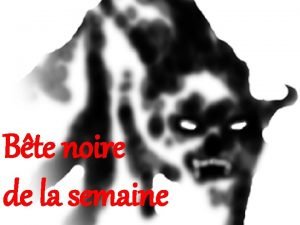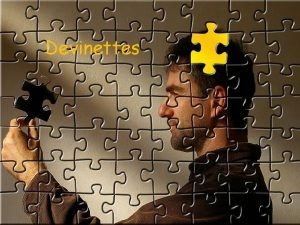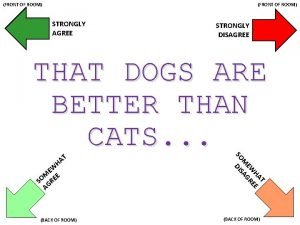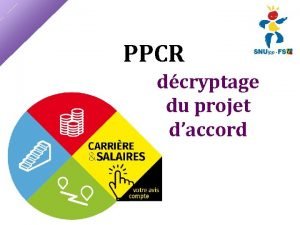Je suis daccord I agree Je ne suis


- Slides: 2

Je suis d’accord = I agree Je ne suis pas d’accord = I don’t agree imagine Ça marche = that works Moi, aussi = Me too! Sans doute = without doubt Tu as raison = You’re right Pas possible! = No way! Tu plaisantes! = You’re joking! To agree or disagree yo Ga i so urse n m tim e lf e! Je ne supporte pas = I can’t stand To talk about preferences Je pense que = I think that. . . Je trouve que = I find that… Je crois que = I believe that… C’est = It is. . . Ce n’est pas = It is not. . . A mon avis = In my opinion. . . Je sais que = I know that. . . C’était = It was. . . Ce sera = It will be. . . Ça m’est égal… = it’s all the same to me Chatty Mat eli ng s s es pr ion ex in To n op a J’aime = I like Je n’aime pas = I don’t like Je préfère = I prefer Je voudrais = I would like Je préférerais = I would prefer Verbs that follow the above need to be in the infinitive. Comme tu veux = as you want J’ai gagné! = I won! J’ai perdu! = I lost! C’est à moi = it’s my turn C’est à toi = it’s your turn Moi, d’abord = me first! Tricheuse! = Cheat! Et toi? = And you? Qu’en penses – tu? = What do you think? To ask questions Où? = Where? Tu vas. . . ? = Are you going to. . . ? Tu peux. . . ? = Can you. . . ? Fe J’adore = I love Je déteste = I hate J’ai horreur de = I hate J’imagine = I Bien sûr! = Of course! Quoi? ! = What? ! Tu es folle!= You’re mad! g kin r or he W get to Peux-tu répéter s’il te plait? = Could you repeat please? Hein? = Eh? What? Bon! = well/right/so, etc. Ben… euh…. = Well, er… avec = with Extending opinions pourquoi? = why? parce que/car = because mais = but cependant = however En plus = furthermore Je suis fatigué(e) = I’m tired Je suis en forme = I’m feeling great Je suis triste = I’m sad Je suis contente = I’m happy Ça va bien = very well Pas mal=not bad J’ai trop chaud=I’m too hot J’ai soif= I’m thirsty J’ai faim=I’m hungry Je suis perdue = I’m confused

Comment décrire une image Pour commencer: Sur l’image – In the image Il y a – There is/There are Je peux voir – I can see On peut voir – You can see Sois specifique! au premier plan – in the foreground à l’arrière plan – in the background à gauche – to the left of à droite – to the right of près de – close to devant – in front of Que font-ils? Il/Elle porte – He/She is wearing Il/Elle travaille – He/She is working Il/Elle joue – He/She is playing Il/Elle mange – He/She is eating Il/Elle étudie – He/She is studying Ils/Elles …ent – Pronounced the same! Qui? un homme – a man une femme – a woman un enfant – a child un vieil homme – an old man une vieille femme – an old woman un jeune – a young person une famille - a family Le visage! Je dirais qu’il/elle est – I would say he/she is. . . Je pense/Je crois qu’il/elle est – I believe he/she is… il sont – they are. . Il semble qu’il/elle soit. . . – It seems he/she is. . . qu’ils/elles soient. . . –they are. . . Il/Elle a – He/She has (use with age!) Ils/Elles ont – They have peut-être – maybe heureux/heureuse(s) – happy triste(s) – sad fatigué(e)(s) – tired en colère/fâché(e)(s) – angry parce qu’il/elle (n’) aime (pas) + inf – because he/she does(n’t) like. . .



